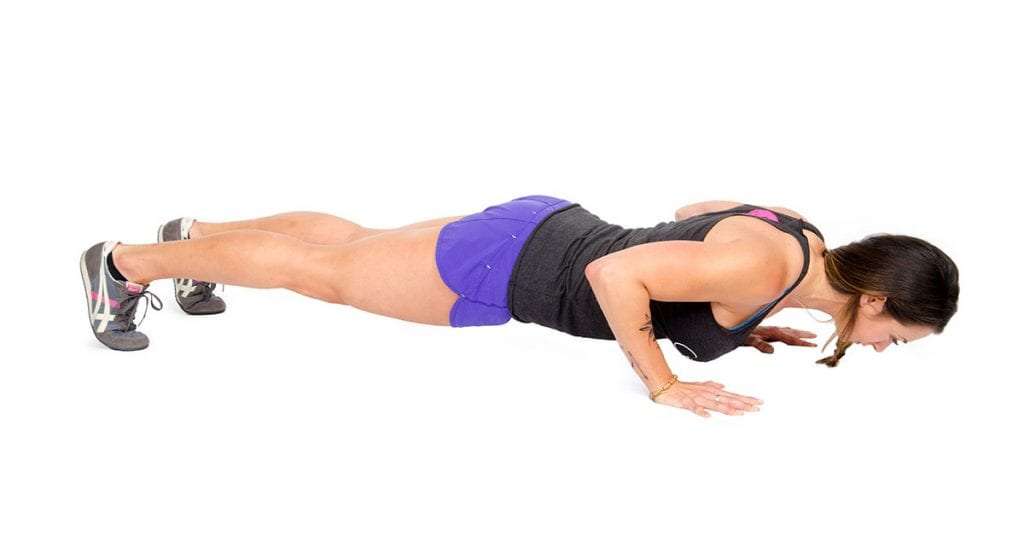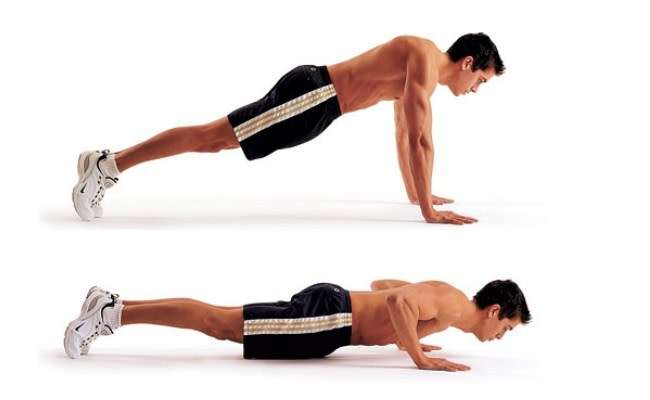If you have ever wondered whether push-ups can truly help build upper body strength and lean muscle, then this story is for you.
Push-ups are often thought of as a basic exercise, but I discovered just how powerful they can be when I committed to a consistent push-up regimen.
This journey took me from barely managing a few reps to busting out sets with ease—and it transformed my upper body strength and physique in the process.
In this article, leanandfit.info will share how I used push-ups to build lean muscle and lose fat, including the strategies that helped me progress and the science behind why this classic exercise is so effective.
In This Article:
- Why Push-Ups? The Surprising Benefits of This Basic Exercise
- The Science Behind Muscle Growth from Push-Ups
- Building a Push-Up Routine for Strength and Muscle Gain
- Real-Life Example: How I Progressed with Push-Ups
- Push-Up Variations for Targeting Different Muscles
- FAQs on Push-Ups and Upper Body Strength Development
- Nutrition and Recovery: Fueling My Progress
- Conclusion: The Power of Push-Ups for Building Upper Body Strength
Why Push-Ups? The Surprising Benefits of This Basic Exercise
Push-ups are more than just an old-school exercise—they are a full-body workout in disguise.
They engage not only the chest but also the shoulders, triceps, and even the core.
When done with proper form, push-ups can help build upper body strength, endurance, and lean muscle, making them a fantastic option for anyone looking to improve fitness without fancy equipment.
As I started incorporating push-ups into my daily routine, I realized just how versatile this exercise was.
They became my go-to for upper body training, as they’re easy to modify, easy to progress, and easy to fit into any routine.
Plus, research published in the Journal of Strength and Conditioning Research confirms that push-ups activate multiple muscle groups, improving muscle strength and endurance over time.
>>> Want to Lose Weight Like I Did??? Check Out My “Secret Fat Loss Smoothie Recipe” TODAY! <<<
The Science Behind Muscle Growth from Push-Ups
To understand how push-ups build muscle, let us dive into the science.
Building muscle requires a combination of mechanical tension, muscle damage, and metabolic stress. Push-ups tick all these boxes.
The repetitive motion of a push-up creates enough resistance to challenge muscles, while the isometric hold in the core engages stabilizers.
Studies, including one in the European Journal of Applied Physiology, show that bodyweight exercises, when done to muscle fatigue, are just as effective as traditional resistance training in increasing muscle mass and strength.
By incorporating regular push-ups, I was able to apply enough stress to my muscles to stimulate growth.
But how does this translate into real gains?
By performing push-ups regularly and increasing reps over time, I created the perfect conditions for lean muscle development, all without lifting a single dumbbell.
Building a Push-Up Routine for Strength and Muscle Gain
When I first started, I could barely manage 10 push-ups in a row.
So, I broke down my goals into manageable sets and gradually built my endurance.
Here is how I did it:
- Start with Small Sets: In the beginning, I did 3 sets of 5 push-ups with rest in between. Over time, I added more reps to each set.
- Increase Frequency: I began with push-ups three times a week, eventually working up to five days a week.
- Focus on Form: Maintaining proper form was crucial, so I kept my hands shoulder-width apart, engaged my core, and avoided letting my hips sag.
Correct form is key for push-ups, as it maximizes the workout’s effectiveness and prevents injury.
According to the American Council on Exercise, a proper push-up position engages the chest, triceps, shoulders, and core effectively, making every rep count.
How I Progressed with Push-Ups?
One of the biggest motivators was seeing my own progress. I still remember the first time I did 20 push-ups without stopping.
It was a small victory but significant because it marked a point where I felt stronger and more capable.
Each week, I added more reps to my sets.
I went from doing 10 to 20, then to 30 push-ups per set.
Over time, my arms, shoulders, and chest became more defined, and I felt a newfound strength in my upper body.
This consistency and progression are essential to building muscle through push-ups.
A study from the Journal of Sports Medicine and Physical Fitness supports this approach, emphasizing that incremental increases in volume are crucial for muscle adaptation.
Push-Up Variations for Targeting Different Muscles:
Nutrition and Recovery: Fueling My Progress
Building lean muscle is not just about the reps—you need to fuel your body with the right nutrition.
I focused on consuming lean protein, complex carbs, and healthy fats to support my muscle-building journey.
Protein, in particular, plays a crucial role in muscle repair and growth.
Additionally, allowing time for recovery was essential.
Push-ups can be intense on the joints and muscles, so I took rest days to let my muscles recover.
A study in the International Journal of Sports Science shows that muscle recovery time is just as important as the workout itself in building strength and endurance.
FAQs on Push-Ups and Upper Body Strength Development
Q-1: How did you structure push-up training to build strength without overtraining?
A-1: I used a three-day rotation: Strength (low reps, long rest) on Day 1, Volume (moderate reps, short rest) on Day 2, and Skill/Tempo (slow eccentrics, paused reps) on Day 3. Example week: Mon 6×5 with 2–3 min rests; Wed 5×12 with 60–75 s rests; Fri 4×8 with 3-second lowers and 1-second chest-hover pauses. The mix kept joints happy, drove progressive overload, and improved control at the bottom range.
Q-2: What progressions moved you past a plateau at standard push-ups?
A-2: I treated push-ups like weights: change the leverage. My ladder was incline → flat → feet-elevated → ring/TRX push-ups (for stability demand) → arched “pseudo-planche” push-ups (hands slightly behind shoulders). When reps stalled, I added weighted backpack sets for strength and finished with a mechanical drop set: feet-elevated to flat to knees with no rest to extend time under tension.
Q-3: How did you target chest, shoulders, and triceps differently using only push-ups?
A-3: I rotated hand position and tempo:
-
Wide, 2-sec pause at stretch → chest emphasis.
-
Diamond or close-grip → triceps lockout strength.
-
Deficit push-ups on yoga blocks → shoulder flexion strength and chest range.
-
Explosive clap or band-assisted speed reps → power.
I kept elbows at ~30–45° from the torso to protect shoulders and logged which variation improved my next week’s standard set.
Q-4: What metrics told you you were gaining lean muscle, not just endurance?
A-4: Three checkpoints:
-
Performance: my best set moved from 20 strict reps to 35, while 5RM with a loaded backpack climbed weekly.
-
Anthropometrics: bi-weekly tape at chest and relaxed upper arm (+1.5–2.0 cm over 10–12 weeks).
-
Look/feel: thicker pec line near the sternum, firmer triceps horseshoe, and no drop in waist measurement—signs the volume was building muscle without fluff.
Q-5: What recovery and nutrition tweaks made push-ups translate into visible size?
A-5: I aimed for ~1.6–2.2 g/kg/day protein, prioritized a protein-rich meal within a few hours of training, kept a slight calorie surplus on build blocks, and walked daily to aid recovery. For joints, I used wrist blocks or knuckles to keep wrists neutral, added scapular push-ups and wall slides for shoulder health, and took a deload week every 5–6 weeks (cut volume in half, keep technique crisp). That combo let me stack sessions, recover well, and turn reps into lean mass.
The Power of Push-Ups for Building Upper Body Strength
If you are looking to build upper body strength and lean muscle without weights, push-ups are your answer.
My journey with push-ups taught me the power of consistency and the importance of proper form.
Starting small and gradually increasing reps allowed me to build strength over time.
Today, I can confidently say that push-ups transformed my fitness routine.
They provided me with a versatile, effective way to build muscle and burn fat.
So, if you are ready to see real results, all you need is a few square feet of space and a little determination.
Push yourself, literally, and you will be amazed at the strength you can build with this simple exercise.
References:

